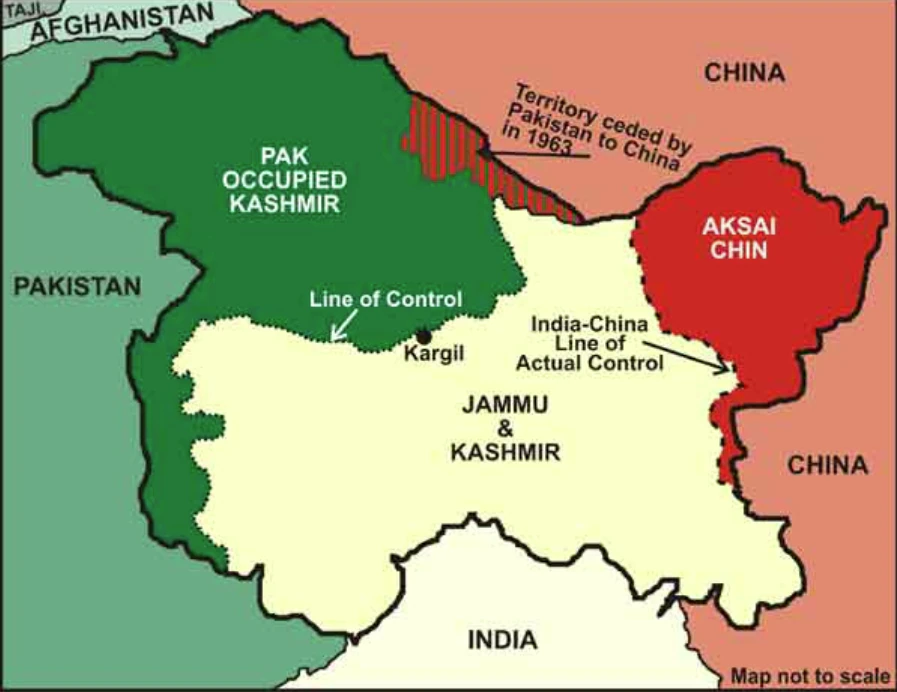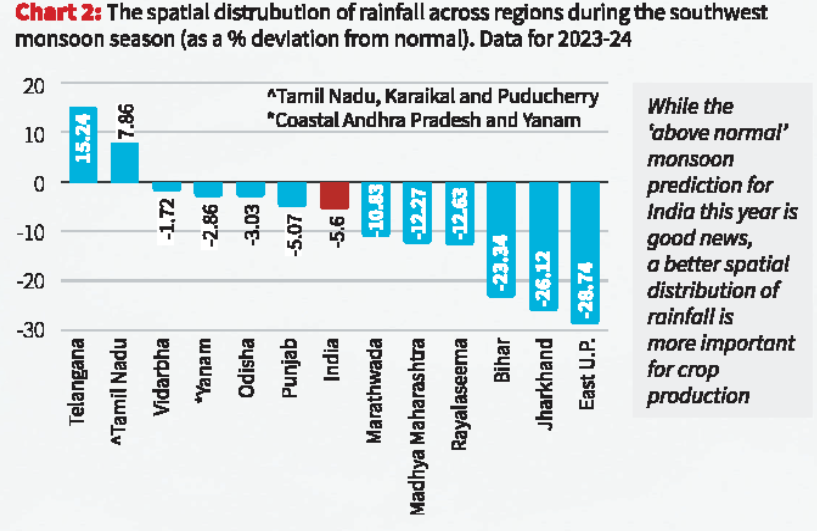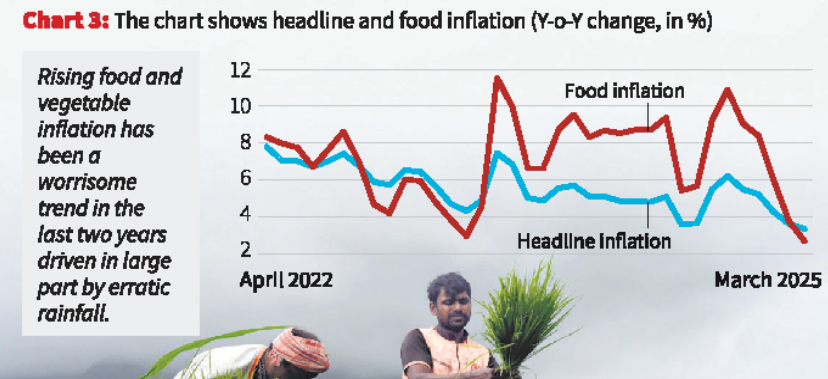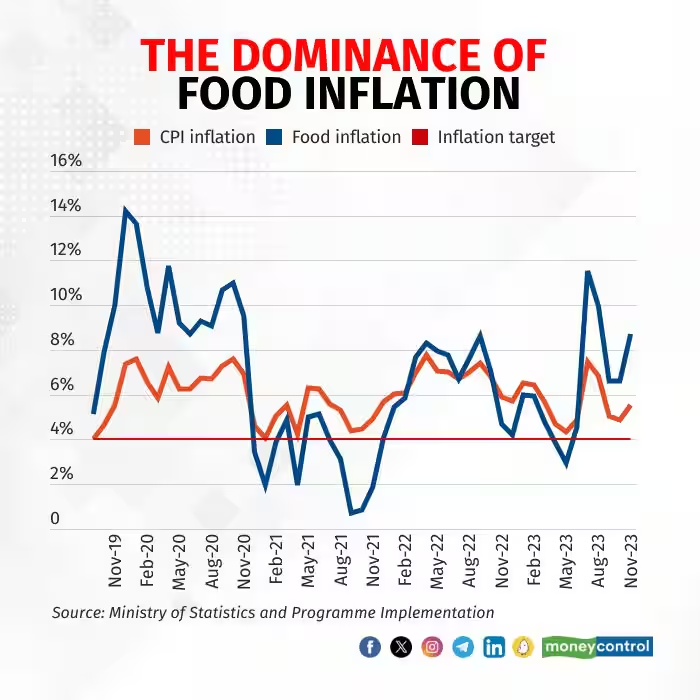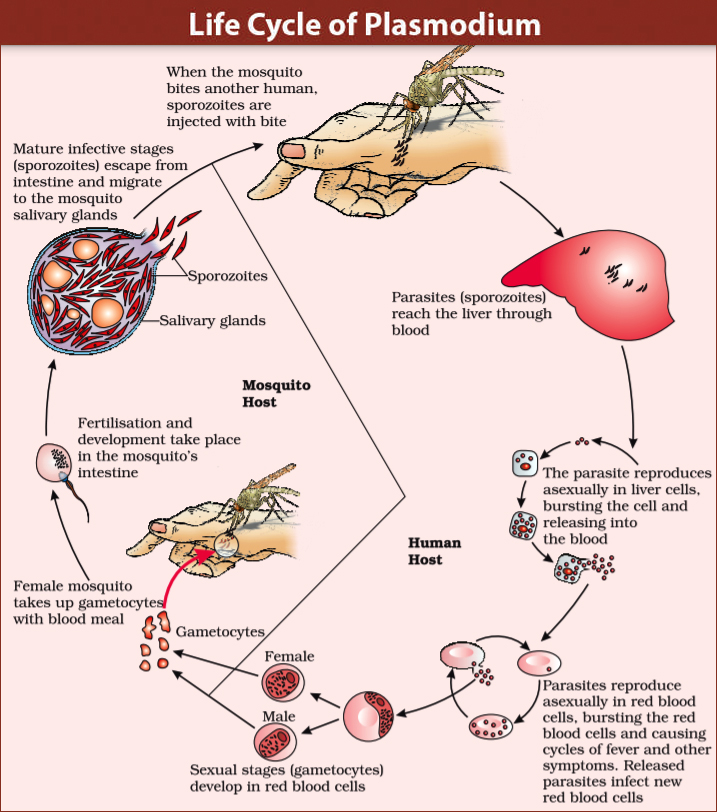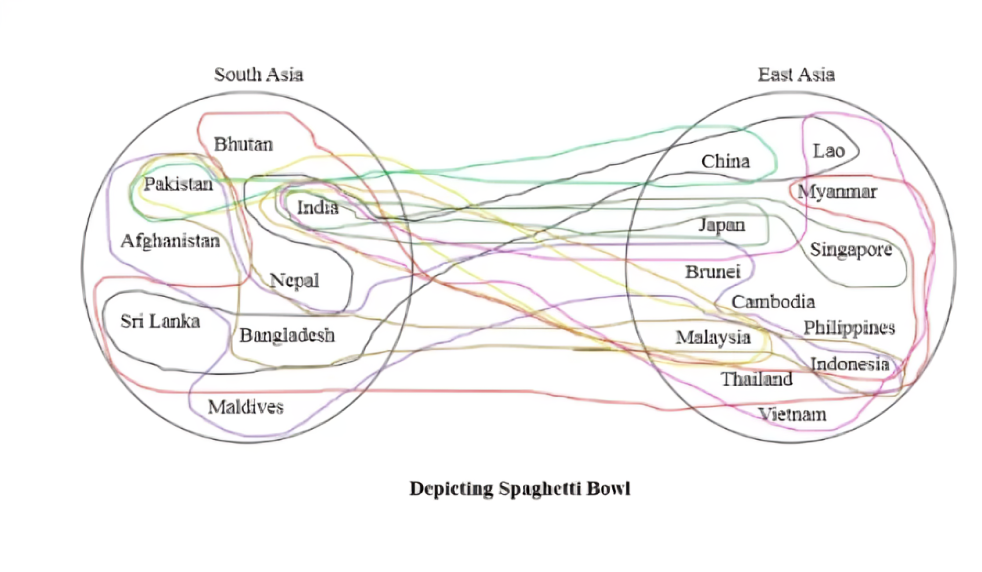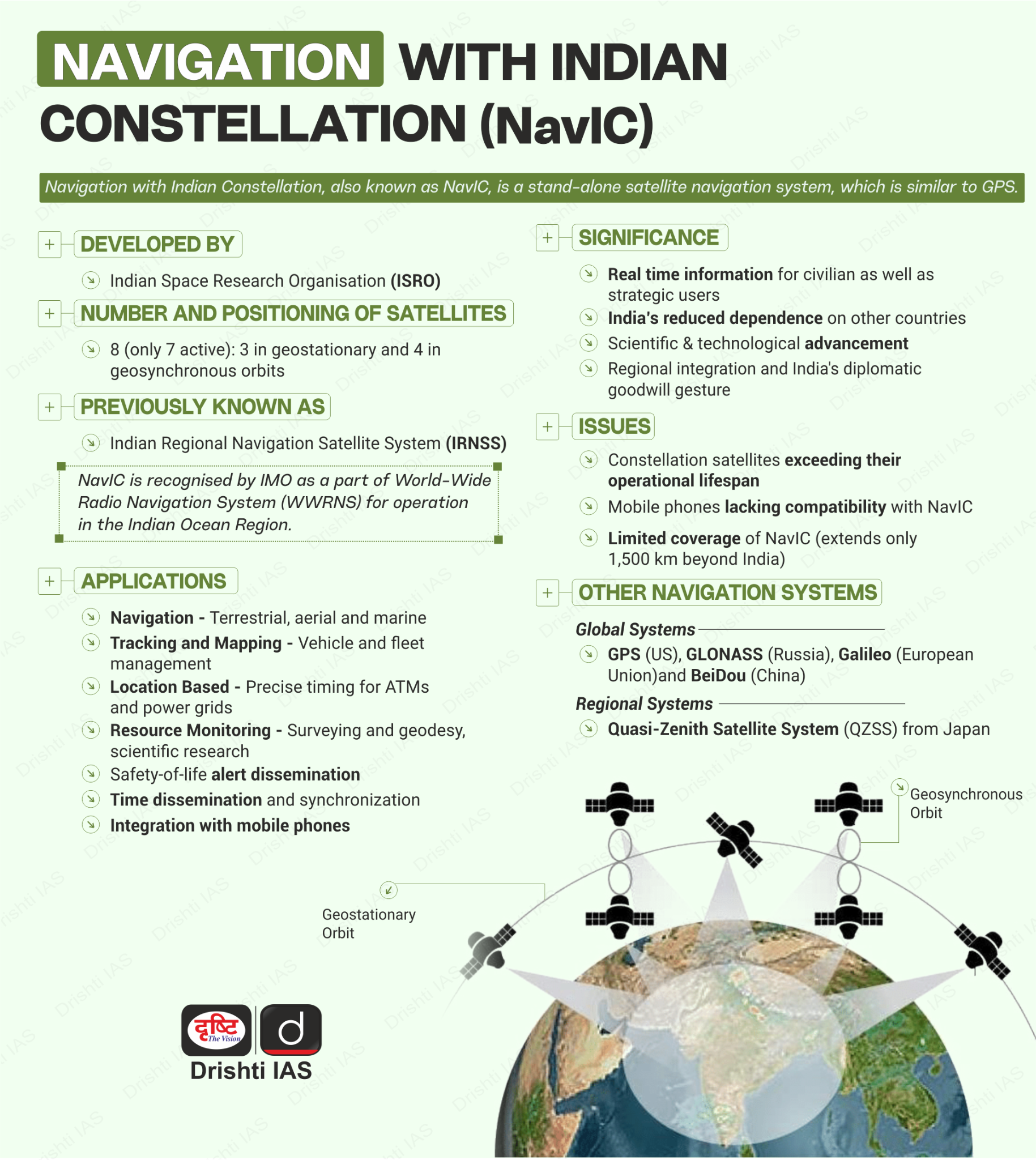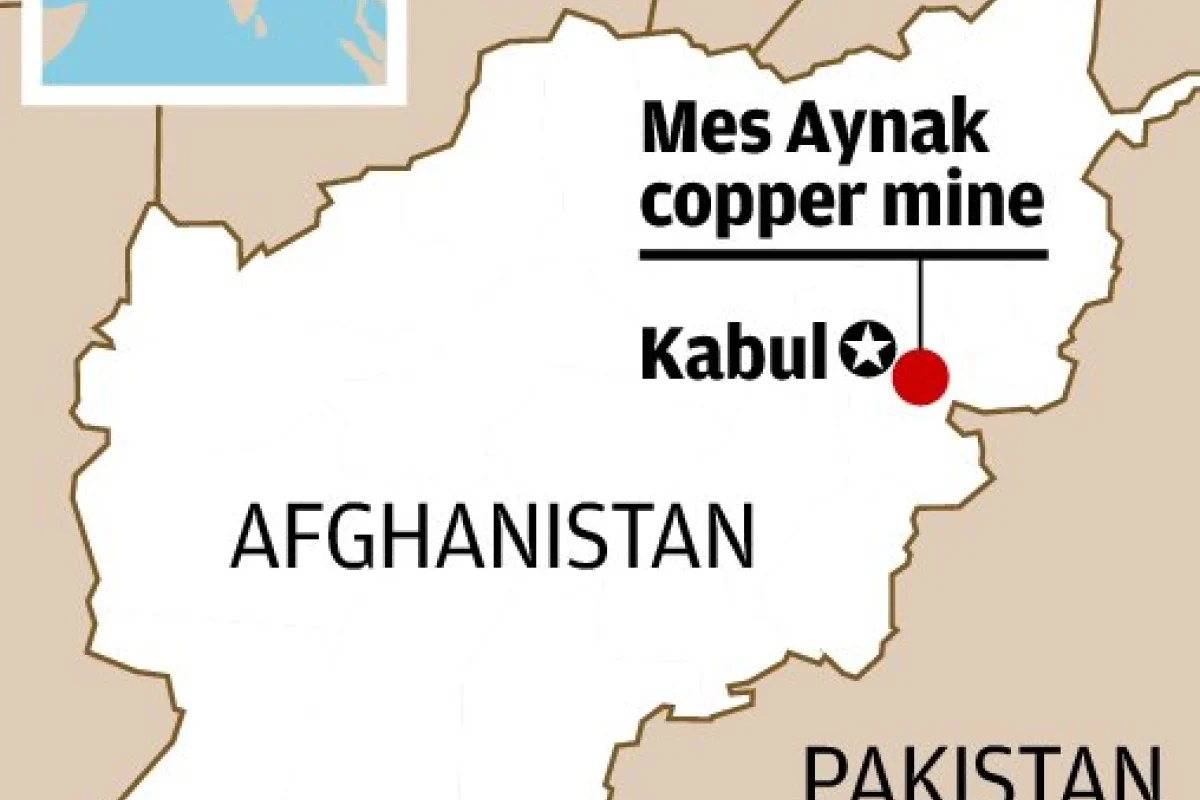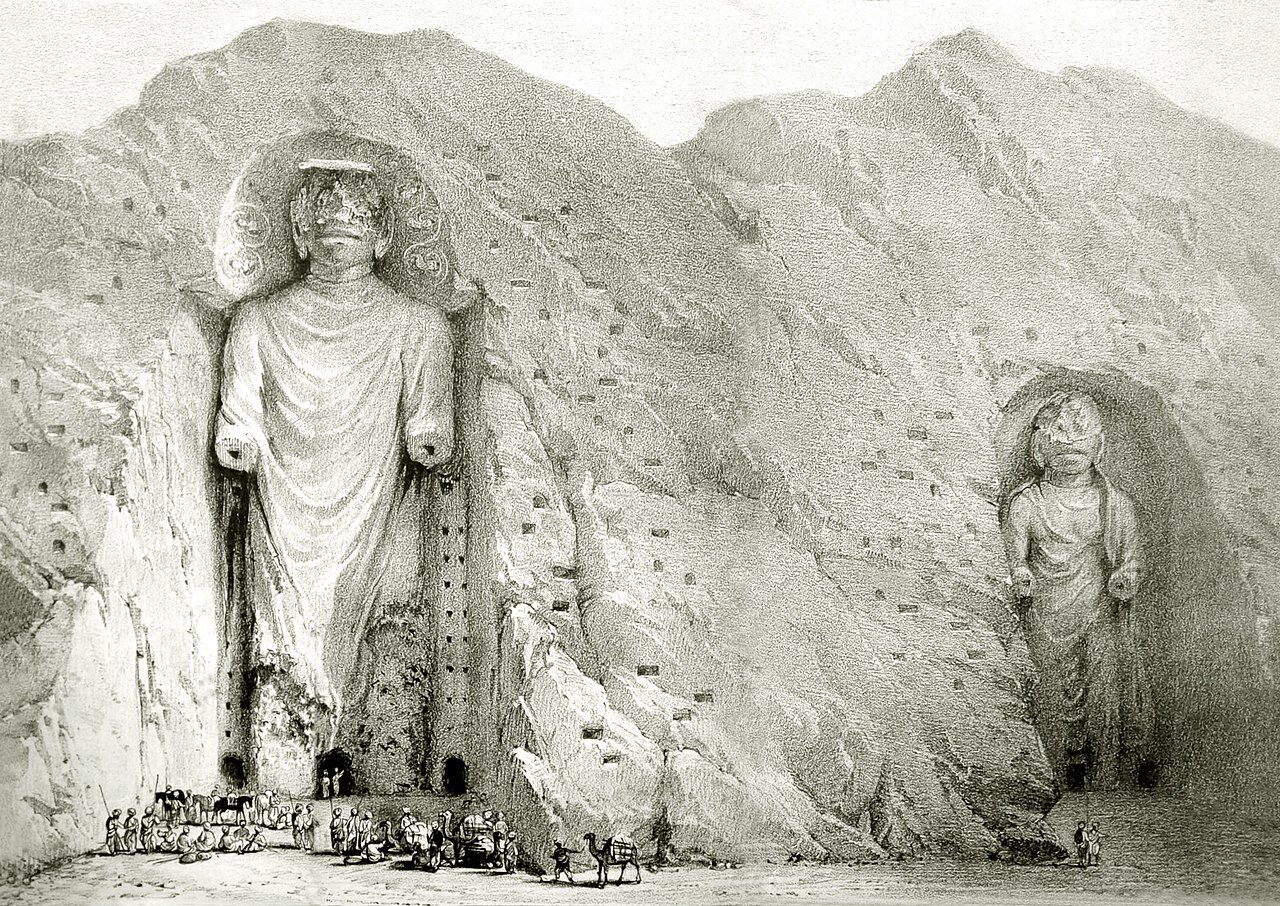International Relations
Suspension of the Simla Agreement
For Prelims: Line of Control, Simla Agreement of 1972, United Nations, Article 370, South Asian Association for Regional Cooperation
For Mains: Indo-Pakistan Bilateral Relations, Strategic implications of Pakistan suspending the Simla Agreement, India’s nuclear doctrine and strategic autonomy
Why in News?
Following India’s response to the Pahalgam terror attack in Jammu and Kashmir, Pakistan announced that it would place the Simla Agreement of 1972 in abeyance.
- This decision has raised concerns about the future of peace and stability in the region, especially regarding the Line of Control (LoC) in Jammu and Kashmir.
What is the Simla Agreement?
- About: The Simla Agreement was a bilateral treaty signed on 2nd July 1972 in Shimla, Himachal Pradesh, between Indian Prime Minister Indira Gandhi and Pakistani President Zulfikar Ali Bhutto.
- It came in the aftermath of the 1971 India-Pakistan war, which led to the creation of Bangladesh (formerly East Pakistan) and a decisive Indian military victory.
- The accord aimed to normalize relations, end hostilities, and create a blueprint for peaceful coexistence and bilateralism.
- Key Provisions:
- Reference to UN Charter: The principles and purposes of the United Nations Charter were outlined to govern bilateral relations between India and Pakistan.
- It countered previous UN resolutions (like UNSC Resolution 47) that called for a plebiscite in Kashmir.
- Peaceful settlement of disputes: Both nations pledged to resolve all disputes, including Kashmir, bilaterally without third-party intervention.
- Respect for sovereignty: The countries agreed to respect each other’s territorial integrity, political independence, and non-interference in internal affairs.
- Redrawing of the ceasefire line: The 1971 ceasefire line in Jammu and Kashmir was re-designated as the Line of Control (LoC), with both sides committing not to alter it unilaterally, irrespective of differences.
- Normalization of diplomatic ties: The agreement called for resuming communications, travel, and trade links, aiming to restore diplomatic and economic relations.
- Release of prisoners of war: India agreed to release over 93,000 Pakistani prisoners of war, one of the largest post-war releases in history.
- Reference to UN Charter: The principles and purposes of the United Nations Charter were outlined to govern bilateral relations between India and Pakistan.
Note: While the Simla Agreement aimed to resolve the Kashmir issue, it fell short of addressing the region's broader political status. The LoC, instead of being a temporary measure, became a de facto border, leaving the core dispute unresolved. Additionally, the absence of a strong enforcement mechanism has led to recurring violations.
What are the Potential Implications of Suspension of the Simla Agreement?
- Shift from Bilateralism to Internationalization: With the bilateral framework of the Simla Agreement in abeyance, there might be calls for international mediation or intervention in resolving disputes.
- Pakistan may seek third-party involvement, such as the UN, or allies like China, or the Organisation of Islamic Cooperation (OIC), to internationalize the Kashmir conflict, contravening the Simla Agreement.
- Proxy Warfare Risks: Pakistan has previously violated the agreement (e.g., the 1984 Siachen incursion, 1999 Kargil War).
- The suspension could potentially revive proxy warfare tactics that the Simla framework aimed to curb.
- Increased Diplomatic and Military Tensions: The suspension of the Simla Agreement may not have immediate tactical consequences, but could open the door to greater diplomatic and military brinkmanship.
- Any revival of hostilities or border instability can derail developmental and democratic consolidation efforts in J&K post Article 370 abrogation.
- The potential for conflict between two nuclear-armed states raises alarms in the international community, prompting calls for restraint and dialogue.
- Influence on Multilateral Cooperation: The breakdown in bilateral agreements may affect cooperation in regional organizations like South Asian Association for Regional Cooperation (SAARC), hindering collective efforts on issues like counter-terrorism and economic development.
What Measures Should India Adopt to Tighten Security Along the LoC?
- Deployment of Anti-Drone Defense Systems: Install anti-drone radars and Artificial Intelligence (AI) based detection systems to counter growing drone-based smuggling and surveillance along the LoC. Collaborate with Israeli "Drone Dome" technology for enhanced response capabilities.
- Enhanced Surveillance Using Satellite and UAV Technologies: Integrate real-time satellite imagery, unmanned aerial vehicles patrols (like Heron TP drones), and ground-based radar data for seamless 24x7 monitoring.
- Employ AI-driven analytics to detect unusual movements or tunnel activities.
- Strengthening Counter-Infiltration Grids: Refine multi-layered counter-infiltration grids involving army, Border Security Force (BSF), local police, and intelligence units.
- Regularly revise SOPs (Standard Operating Procedures) based on seasonal changes and enemy tactics.
- Community Engagement and Village Defence Committees (VDCs): Revive and empower Village Defence Committees (especially in Anantnag) with proper arms training, intelligence gathering roles, and early warning systems.
- Foster community-police-military collaboration to build a “first line of alert.”
- Comprehensive Border Fencing Modernization: As a long term measure, there is a need to replace traditional barbed-wire fences with smart fences equipped with infrared sensors, laser walls, and seismic detectors under projects like Comprehensive Integrated Border Management System (CIBMS).
- Accelerate fencing in vulnerable sectors such as Gurez, Uri, and Poonch, where infiltration routes are active.
Conclusion
The suspension of the Simla Agreement provides India an opportunity to recalibrate its security and diplomatic strategies. Strengthening LoC defences and international alliances is crucial. India can leverage this incident to highlight Pakistan’s role in terror financing. It also strengthens the case for Pakistan’s re-listing in the Financial Action Task Force grey list.
| Read more: Pahalgam Terror Attack and Suspension of the Indus Waters Treaty |
|
Drishti Mains Question: Critically analyze the significance of the Simla Agreement in shaping post-1971 India-Pakistan relations. What could be the implications of its suspension? |
UPSC Civil Services Examination, Previous Year Question (PYQ)
Prelims:
Q1. With reference to the Indus river system, of the following four rivers, three of them pour into one of them which joins the Indus directly. Among the following, which one is such a river that joins the Indus direct? (2021)
(a) Chenab
(b) Jhelum
(c) Ravi
(d) Sutlej
Ans: (d)
Mains:
Q. "Increasing cross border terrorist attacks in India and growing interference in the internal affairs of several member states by Pakistan are not conducive for the future of SAARC (South Asian Association for Regional Cooperation)." Explain with suitable examples. (2016)
Q. Terrorist activities and mutual distrust have clouded India – Pakistan relations. To what extent the use of soft power like sports and cultural exchanges could help generate goodwill between the two countries? Discuss with suitable examples. (2015)


Indian Economy
Monsoon & Food Inflation in India
For Prelims: Retail inflation, Food Price gains, Consumer Price Index (CPI), CPI-Combined (CPI-C), WPI, Cost-push inflation, drip irrigation, headline inflation, Indian Meteorological Department
For Mains: Impact of Monsoon on Food Inflation in India, Significance and Challenges of Food Inflation for Indian Economy.
Why in News?
The Indian Meteorological Department (IMD) in its first forecast for 2025 has forecasted an above-normal monsoon for 2025 which will support agricultural output and aid the government’s efforts to contain food inflation, which is highly sensitive to rainfall variability.
What is IMD's Forecast on Monsoons for 2025?
- Rainfall Prediction:
- IMD has forecast an “above normal” southwest monsoon in 2025, with rainfall likely at 105% of the Long Period Average (87 cm), ±5% margin.
- IMD classifies monsoon rainfall as: Deficient (<90% of LPA), Below Normal (90–95%), Normal (96–104%), Above Normal (105–110%), and Excess (>110%).
- This is backed by neutral El Niño–Southern Oscillation (ENSO) and Indian Ocean Dipole (IOD) conditions and below-normal snow cover over Eurasia, which supports stronger monsoons.
- IMD’s forecast accuracy has improved, with average deviation reducing to 2.27% (2021–25) from 7.5% (2017–20).
- IMD has forecast an “above normal” southwest monsoon in 2025, with rainfall likely at 105% of the Long Period Average (87 cm), ±5% margin.
- Geographic Distribution:
- The IMD forecast predicts below normal rainfall in parts of Jammu & Kashmir, Ladakh, Tamil Nadu, Bihar, and the Northeast.
- While, it forcasts normal to above normal rainfall in Madhya Pradesh, Rajasthan, Maharashtra, Odisha, Chhattisgarh, Uttar Pradesh, and West Bengal which form the core monsoon zone (agriculture primarily rain-fed) of the country.
What is the Impact of Monsoons on Food Inflation in India?
- Agricultural Yield and Crop Prices: Monsoons impact agricultural output and food prices, but the effect is not always direct.
- While good monsoons generally improve yields and lower prices, certain crops may still face price hikes due to production issues.
- Over the last 10 years (2015-24), rainfall has been normal or above average in 6 out of 10 years. In years with lower rainfall, such as FY16 and FY19, agricultural growth was weak (at just 0.65% in FY18 and 2.7% in FY24), averaging 4.45% over the decade.
- Supply Chain Disruptions and Transportation Costs:
- Heavy monsoons often disrupt transport and supply chains, raising logistics and storage costs. For example, the 2023 floods in Assam and Bihar delayed staple movement, causing temporary price spikes.
- Monsoon Deficit and Import Inflation:
- Monsoon failure raises import dependency, especially for pulses and edible oils, adding to inflation. In 2023, poor rains led to increased edible oil imports from Indonesia and Malaysia. In 2022-23, India imported 16.5 MT of edible oils, with domestic production fulfilling only 40-45% of the country's requirements.
Beyond Rainfall: Key Drivers of Food Inflation
- Despite high rainfall in FY20, FY21, FY23, and FY25 (over 100% of LPA), food inflation remained high (6–7%). In contrast, during below-normal rainfall years like FY18 and FY19, food inflation was low (2.2% and 0.7%).
- This indicates that rainfall alone doesn't drive food inflation.
- Notably, food inflation dropped from over 8% in Dec 2024 to below 6% in Jan 2025, and fell below headline inflation by March 2025, for the first time since July 2023.
What are the Other Key Factors Affecting Food Inflation in India?
- Supply Shocks: Factors like hoarding and market disruptions also contribute to price hikes, even if rainfall is good.
- Global Commodity Prices: Rising global prices of key imports like edible oils and pulses raise domestic costs.
- India’s dependence on imports makes it vulnerable to global market fluctuations, directly impacting food inflation.
- Monetary Policy: When the RBI increases interest rates, borrowing becomes costlier for producers.
- This raises production costs, especially for packaged foods, leading to higher consumer prices.
- Government Policies: Changes in Minimum Support Prices (MSPs) support farmers but can raise market prices.
- Export restrictions may protect local supply but also disrupt global trade and push up domestic prices.
- Supply Chain Disruptions: Weak storage infrastructure and transport delays lead to wastage and higher food prices. Efficient logistics are crucial to keeping food inflation under control.
| Click Here to Read: Indices to Measure Food Inflation |
What is the Current Status of Food Inflation in India?
- Consumer Food Price Index (CFPI) which measures India’s food inflation increased from 7.5% in FY24 to 8.4% in FY25, primarily due to price rise in vegetables and pulses, exacerbated by extreme weather events.
- Excluding price-sensitive vegetables (Tomato, Onion, Potato) from CPI basket, average food inflation in FY25 was 6.5%.
What Steps should India take to Control Food Inflation?
- Improved Supply Chain Management: Strengthening logistics, storage, and distribution can reduce wastage and ensure a steady food supply.
- Using refrigerated trucks for perishables helps minimize spoilage and maintain fresh produce availability.
- Promoting Agri-Tech for Inflation Control: Encouraging the use of technologies like precision farming, drones, and AI-driven crop management can boost productivity and reduce input costs, helping stabilize food prices.
- Techniques like drip irrigation improve productivity in water-scarce areas, while drought-resistant varieties help prevent crop failures during water shortages.
- Additionally, tools like AmbiTag help reduce food wastage by monitoring transit temperatures and providing real-time alerts, ensuring better preservation and supply chain efficiency.
- Agricultural Diversification: Encouraging farmers to grow diverse crops reduces dependence on a few commodities.
- Promoting pulses alongside rice and wheat improves soil fertility, provides alternative income, and mitigates risks from fluctuating monsoon conditions.
- Reforming Food Subsidy Systems
- Improving the Public Distribution System (PDS) through better targeting, reduced leakages, and expanded coverage can help ease food inflation. Using technology for transparent and efficient subsidy delivery ensures affordability for the poor without straining fiscal resources.
- Towards Climate Resilience: Climate-smart practices such as rainwater harvesting, crop rotation, and climate-resilient seeds help farmers adapt to erratic monsoons. A key step in this direction is the release of 109 climate-resilient crop varieties, aimed at stabilizing yields and reducing weather-related losses.
Conclusion
A normal monsoon forecast by IMD is positive for India’s kharif harvest, but its effect on food inflation is complex. While good rainfall supports crops, factors like rainfall timing, regional variations, and specific crop vulnerabilities (e.g., pulses, vegetables) influence prices
|
Drishti Mains Question: Examine the impact of monsoon variability on food inflation in India. Also, discuss the other structural and policy factors that contribute to food price volatility. |
UPSC Civil Services Examination, Previous Year Question (PYQ)
Prelims
Q.1 Consider the following statements: (2020)
- The weightage of food in Consumer Price Index (CPI) is higher than that in Wholesale Price Index (WPI).
- The WPI does not capture changes in the prices of services, which CPI does.
- The Reserve Bank of India has now adopted WPI as its key measure of inflation and to decide on changing the key policy rates.
Which of the statements given above is/are correct?
(a) 1 and 2 only
(b) 2 only
(c) 3 only
(d) 1, 2 and 3
Ans: (a)
Q 2. If the RBI decides to adopt an expansionist monetary policy, which of the following would it not do? (2020)
- Cut and optimize the Statutory Liquidity Ratio
- Increase the Marginal Standing Facility Rate
- Cut the Bank Rate and Repo Rate
Select the correct answer using the code given below:
(A) 1 and 2 only
(B) 2 only
(C) 1 and 3 only
(D) 1, 2 and 3
Ans: B
Mains
Q. There is also a point of view that Agricultural Produce Market Committees (APMCs) set up under the State Acts have not only impeded the development of agriculture but also have been the cause of food inflation in India. Critically examine. (2014)


Important Facts For Prelims
World Malaria Day 2025
Why in News?
World Malaria Day, observed on 25th April annually, was established by the World Health Organization (WHO) in 2007 to raise awareness and drive action against malaria.
- The theme for World Malaria Day 2025 is “Malaria Ends With Us: Reinvest, Reimagine, Reignite”
What are the Key Facts Regarding Malaria?
- About: Malaria is a life-threatening disease caused by the Plasmodium parasite, transmitted to humans by infected female Anopheles mosquitoes.
- It is common in tropical and subtropical regions of the world such as sub-Saharan Africa, Southeast Asia, and South America.
- There are 5 Plasmodium species that cause malaria in humans. P. falciparum is the deadliest while P. vivax is the most widespread.
- The other species are P. malariae, P. ovale, and P. knowlesi.
- The mosquito becomes infected after biting an infected person. The malaria parasites then enter the bloodstream of the next person the mosquito bites.
- The parasites travel to the liver, mature, and then infect red blood cells.
- Symptoms:
- It includes fever, chills, headache, and fatigue, and severe cases can lead to organ failure or death.
- Notably, malaria is both preventable and curable.
- It includes fever, chills, headache, and fatigue, and severe cases can lead to organ failure or death.
- Burden:
- As per the World Malaria Report 2024, In India, between 2015 and 2023, malaria cases declined from 11.69 lakh to 2.27 lakh, and deaths reduced from 384 to 83, marking an 80% decline in both indicators.
- In 2024, India exited WHO’s High Burden to High Impact (HBHI) list, a major milestone in malaria elimination and its vision to achieve malaria-free status by 2030.
- Globally, Malaria remains a major health challenge, affecting 263 million people and killing over 600,000 annually.
- Africa bears 94–95% of the global malaria burden (WHO, 2024).
- As per the World Malaria Report 2024, In India, between 2015 and 2023, malaria cases declined from 11.69 lakh to 2.27 lakh, and deaths reduced from 384 to 83, marking an 80% decline in both indicators.
- Treatment & Prevention:
- Treatment: Advanced with effective drugs like chloroquine and artemisinin, supported by tools like insecticide-treated nets (ITNs) and indoor spraying.
- In 2015, Youyou Tu was awarded the Nobel Prize in Physiology or Medicine for her discovery of artemisinin, which is derived from the sweet wormwood plant, Artemisia annua.
- Vaccines: RTS,S/AS01 (Mosquirix), approved by WHO in 2021, is the first malaria vaccine for children (5 months+).
- In 2023, R21/Matrix-M was approved as a second safe and effective vaccine.
- Insecticide-Treated Nets (ITNs): These nets are treated with insecticide, acting as both a physical and chemical barrier against mosquitoes.
- Chemoprophylaxis: Involves taking antimalarial drugs before, during, and after travel to endemic areas to prevent infection.
- Preventive Chemotherapy: Targeted administration of antimalarials to vulnerable groups (children, pregnant women) during high-risk periods.
- Key strategies include Seasonal Malaria Chemoprevention (SMC), Perennial Malaria Chemoprevention (PMC), Intermittent Preventive Treatment in Pregnancy (IPTp), Mass Drug Administration (MDA) etc.
- During pregnancy, intermittent preventive treatment with sulfadoxine-pyrimethamine (IPTp-SP) is recommended at every scheduled antenatal care visit, starting from the second trimester, in areas with moderate to high malaria transmission to help prevent infection.
- Key strategies include Seasonal Malaria Chemoprevention (SMC), Perennial Malaria Chemoprevention (PMC), Intermittent Preventive Treatment in Pregnancy (IPTp), Mass Drug Administration (MDA) etc.
- Treatment: Advanced with effective drugs like chloroquine and artemisinin, supported by tools like insecticide-treated nets (ITNs) and indoor spraying.
Note:
- Female Anopheles mosquitoes are not true parasites as they do not depend entirely on a host for survival. While they require a blood meal to develop eggs, their primary energy source is plant nectar, unlike parasites which fully rely on the host for sustenance.
Malaria: A Global Disease with Historic Consequences
- The word “malaria” comes from Italian “mala aria” (bad air), once believed to be its cause.
- In 1880, French physician Charles Louis Alphonse Laveran discovered the protozoan parasite Plasmodium as the cause of malaria
- Later, Ronald Ross (1897) proved transmission through Anopheles mosquitoes, completing the disease cycle by 1898.
- This scientific breakthrough helped European colonists survive in Africa, leading to the Scramble for Africa after the Berlin Conference (1884).
- Quinine, mosquito nets, and swamp drainage reduced malaria deaths, enabling colonisation—by 1914, Europeans controlled 90% of Africa.
- Malaria also shaped the trans-Atlantic slave trade, as Africans with genetic resistance were preferred labour in malaria-endemic colonies like the Caribbean and Americas.
- This contributed to racialised labour systems and long-term social inequality.
What are the Key Initiatives to Curb Malaria?
- Global Efforts:
- WHO Global Malaria Program: It supports countries by guiding policy, coordinating global efforts, promoting research, setting evidence-based guidelines, and monitoring malaria trends.
- The WHO Global Technical Strategy for Malaria 2016–2030 aims to reduce malaria cases and deaths by at least 90% by 2030, eliminate malaria in ≥35 countries by 2030 and prevent resurgence in malaria-free countries.
- E-2025 initiative: Under this, World Health Organization (WHO) has identified 25 countries, with the potential to eradicate malaria by 2025.
- Genetically Modified Mosquitoes to Fight Against Malaria
- WHO Global Malaria Program: It supports countries by guiding policy, coordinating global efforts, promoting research, setting evidence-based guidelines, and monitoring malaria trends.
- National Initiatives:
- National Framework for Malaria Elimination 2016-2030
- National Vector-Borne Disease Control Programme: Addresses various vector-borne diseases, including malaria, through prevention and control measures.
- Malaria Elimination Research Alliance-India (MERA-India): Established by the Indian Council of Medical Research (ICMR), collaborates with partners on malaria control research.
- High Burden to High Impact (HBHI) Initiative: Initiated in 4 states (West Bengal, Jharkhand, Chhattisgarh, and Madhya Pradesh) in 2019 to focus on malaria reduction through insecticidal net distribution.
- National Malaria Control Programme (NMCP): Launched in 1953, to address the severe impact of malaria.
- It focuses on three core activities: insecticidal residual spraying (IRS) with DDT, case monitoring and surveillance, and patient treatment.
UPSC Civil Services Examination, Previous Year Questions (PYQs)
Q. Widespread resistance of malarial parasite to drugs like chloroquine has prompted attempts to develop a malarial vaccine to combat malaria. Why is it difficult to develop an effective malaria vaccine? (2010)
(a) Malaria is caused by several species of Plasmodium
(b) Man does not develop immunity to malaria during natural infection
(c) Vaccines can be developed only against bacteria
(d) Man is only an intermediate host and not the definitive host
Ans: (b)


Rapid Fire
Spaghetti Bowl Phenomenon
The turmoil over regional trade policies and proliferating Free Trade Agreements (FTAs) reignited discussions on the Spaghetti bowl phenomenon.
- According to the World Bank, the Spaghetti Bowl Phenomenon refers to the confusing and overlapping network of multiple FTAs between countries, which end up complicating trade instead of facilitating it.
- As each FTA comes with its own set of Rules of Origin (ROO), which makes it challenging for producers to meet the varied criteria when trading across multiple FTAs.
- The term "Spaghetti Bowl Phenomenon" was coined by Jagdish Bhagwati in 1995, where he criticized FTAs for being counterproductive, complicating global trade rather than promoting openness.
- The “spaghetti” metaphor compares the tangle of trade rules to a bowl of spaghetti (messy and hard to navigate).
- Impact: Despite more FTAs, trade volumes between regions (like South Asia and East Asia) often remain stagnant due to this complexity.
| Read more: Reviewing Free Trade Agreements |


Rapid Fire
Indigenous Paddy Variety: Keonjhar Kalachampa
A farmer from Odisha has officially registered his indigenous paddy variety, Keonjhar Kalachampa, and has sought compensation from the Protection of Plant Varieties and Farmers' Rights Authority (PPV&FRA) for the seed's commercialisation.
Keonjhar Kalachampa:
- The Indian government notified the variety in 2015. The Odisha State Seeds Corporation (OSSC) and private companies have significantly contributed to the production and distribution of the variety.
- Features:
- The variety has shown resilience to major diseases, pests, and the effects of climate change.
- It is non-lodging (resistant to bending or falling over), responsive to fertilizers, suitable for both timely and late sowing, and a high-yielding variety.
- Due to its resistance to biotic stress, it is highly preferred by farmers and was one of the first traditional varieties in India integrated into the formal seed supply chain.
Gene Bank Initiative:
- Odisha has created a unique gene bank to preserve traditional paddy varieties from farmers, with seeds stored in a temperature- and humidity-controlled environment for up to 50 years.
- India has established its seed storage facility at Chang La in Ladakh.
Protection of Plant Varieties and Farmers' Rights Authority (PPV&FRA):
- It was established under the PPVFR Act, 2001.
- The authority protects plant varieties, farmers' and breeders' rights, and promotes the development of new varieties while safeguarding the rights of farmers who have conserved plant varieties for generations.
- The Registrar General is the ex-officio Member Secretary of the Authority.
| Read More: Protection of Plant Varieties and Farmers' Rights Authority (PPV&FRA) |


Rapid Fire
GPS Spoofing
During Operation Brahma, the Indian Air Force claimed that its transport aircraft delivering relief to quake-hit Myanmar faced Global Positioning System (GPS) spoofing.
- Under ‘Operation Brahma’, India deployed six military transport aircraft to deliver humanitarian aid, field hospitals, and rescue teams to earthquake-hit Myanmar.
- GPS Spoofing (GPS Simulation): It is a form of cyberattack in which false GPS signals are generated to mislead an aircraft’s navigation systems, posing serious risks to flight safety and mission success.
- GPS spoofing takes advantage of the weak signals sent by satellites, which are easy to overpower.
- Attackers transmit stronger, fake signals that mimic real satellite data.
- The GPS receiver locks onto these counterfeit signals, mistaking them for genuine.
- This causes the device to display incorrect location data, misleading navigation systems.
- Risk: It can hijack planes, redirecting them to unintended locations, posing security risks.
- It can also disrupt military operations, causing misdirected forces and friendly fire.
- Mitigation: To mitigate GPS spoofing risks, multi-constellation systems, advanced signal processing, and anti-spoofing devices can enhance security.
| Read More: NavIC, Myanmar Earthquake |


Rapid Fire
Ancient Buddhist Sites in Afghanistan
The Taliban, once infamous for destroying historical artifacts like the Buddhas of Bamiyan in 2001, now claim to support the preservation of Afghanistan's ancient heritage sites.
Key Buddhist Sites
- Mes Aynak: Mes Aynak (in Logar province) is a major Buddhist archaeological site discovered in 1963. Occupied from the 1st century BC to the 10th century AD, it includes monasteries, stupas, a Zoroastrian fire temple, a mint, copper smelting workshops, and over 1,000 Buddhist statues, frescoes, and coins.
- Its art reflects Hellenistic, Indian, Persian, and Chinese influences. Situated on the Silk Road, it played a key role in spreading Buddhism from India to China.
- Shewaki Stupa: The Shewaki Stupa of Kabul is over 20 meters wide and is a major Buddhist-era monument from the 1st to 3rd centuries AD.
- It reflects both Kushan and Hellenistic architectural styles (influenced by Greek culture) and was built with fieldstones, mud, and plaster.
- The stupa, once a key religious and caravan site, was first excavated in 1820 by archaeologists.
- Bamiyan Buddhas: The 6th century Bamiyan Buddhas were two massive statues, carved into sandstone cliffs in central Afghanistan.
- They belong to Gandharan Buddhist art and reflected Buddhism’s cultural influence from the 1st to 13th centuries.
- Kushan-era Inscriptions: In Laghman Province, archaeologists discovered 2,000-year-old Kushan-era rock niches, Brahmi inscriptions, and winemaking tools, highlighting the empire's vast reach from the Gobi Desert to the Ganga Valley.
| Read More: Bamiyan Buddhas , India’s Engagement with Taliban |



